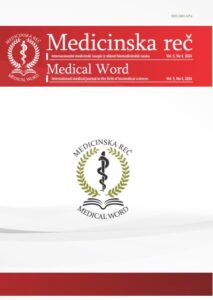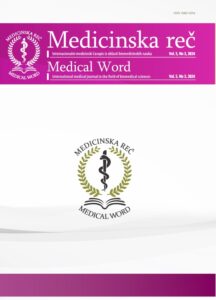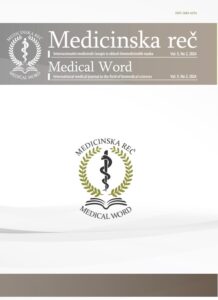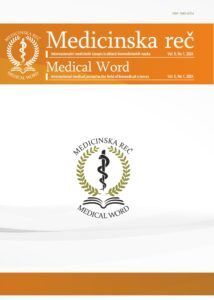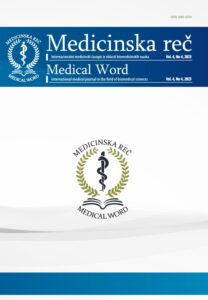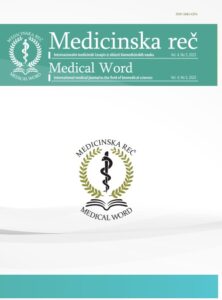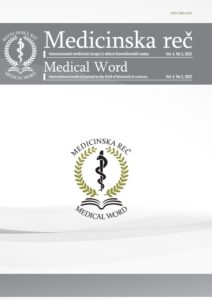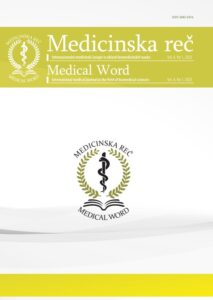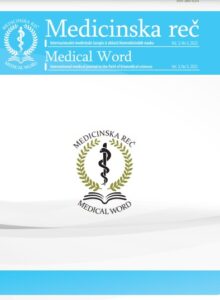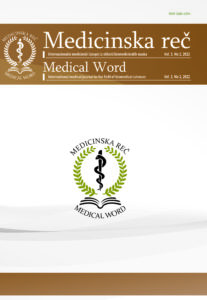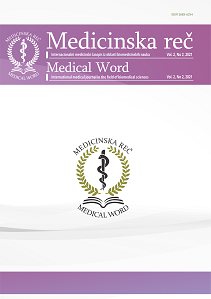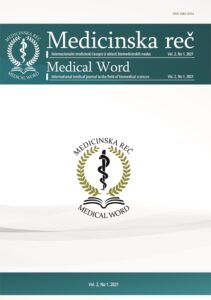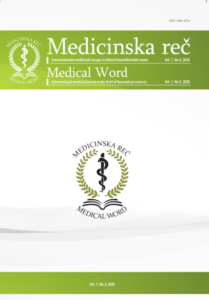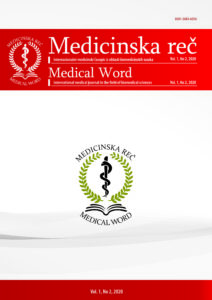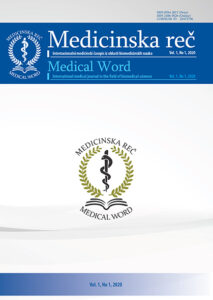Orthodontic therapy with functional appliances
Original article
Irena Đ. Kukolj, Ljiljana Stojanović, Tanja Ivanović, Dragan Ivanović, Mirjana Ragaj, Vojislav Milosavljević, Katarina Nedić
1–9
https://doi.org/10.5937/medrec2301001K
Abstract
Functional appliances are key to success in early orthodontic therapy. Their application is most useful in the period of a pre-puberty and pubertal growth spurt, in order to achieve facial aesthetics and improve the patient’s health.
The aim of treatment with functional appliances is to act on the muscles and ligaments, thereby influencing the movement and growth of the lower jaw forward, when it comes to the distal bite.
The devices are used to correct malocclusions in all three spatial planes: sagittal, vertical, and transferal. In the sagittal dimension, the distal bite is corrected and Angle class I occlusion is established. In the transferal dimension, appliances are used to expand the dental arches. In the vertical dimension, appliances are used to correct an open or deep bite. Most often, mobile functional appliances are used, which consist of special upper and lower parts, such as the Twin block and the “M” block. Other types of functional devices have been used for many years, they consist of one part and their disadvantage is discomfort for patients and the impossibility of use in the presence of septal deviation or any other airway obstruction (activator and all its modifications, as well as Bionator). Recently, fixed functional appliances are also used, the advantage of which is that they do not depend on the cooperation of the patient and that they hold the mandible in an anterior position for 24 hours, achieved on the basis of an adequately taken construction bite. Their application is not conditioned by the puberty growth spurt but can be used by post-adolescents and young adults.
In the production of functional appliances, the most important thing is to take a good construction bite, which determines how the muscle power will be transferred to the tissues, teeth, and jawbone. They determine the course of treatment and its duration. Muscle activation is performed in sagittal, transverse, and vertical directions, individually for each patient depending on the type of device.
Key words: distal bite, constructional bite, activator, bionator
Literatura
- Marković M, ur. Ortodoncija. Beograd-Zagreb; Medicinska knjiga; 1988.
- Nedeljković N i sar. Funkcionalni ortodontski aparati teorija i terapija, Beograd 2021/(6): 173-179; (7): 183-204; (8): 213-229; (9): 231-239; (10): 241-274.
- Lapter V i sar. Ortodontske naprave konstrukcije – namjena – delovanje. Zagreb; Školska knjiga; 1988.
- Balters, W. Die Technik und Übung der allgemeinen und speziellen Bionator-Therapie. Quintessenz 5 (1965), 77.
- Rakosi T. The activator. In: Graber TM, Rakosi T, Petrovic AG, eds. Dentofacial orthopedics with functional appliances. St. Louis: Mosby-Year Book; 1997; 161-188.
- Hotz RP. Application and appliance manipulation of functional forces. Am J Orthod 1970; 58(5): 459-478.
- Stamenković Z, Raičković V, Ristić V. Changes in Soft Tissue Profile Using Functional Appliances in the Treatment of Skeletal Class II Malocclusion. Srp Arh Celok Lek 2015; 143(1-2): 12-5.
- Baccetti T, Franchi L, McNamara JA. The Cervical Vertebral Maturation (CVM) Metod of Optimal Treatment Timing in Dentofacial Ortopedics. Semin Orthod 2005; 11(3): 119-29.
- Baccetti T, Franchi L, Toth LR, McNamara JA, Jr. Treatment timing for Twin-block therapy. Am J Orthod Dentofacial Orthop 2000; 118 (2): 159-70.
- Milosavljević Z. Terapijski efekti twin block aparatom u lečenju osoba sa distalnim zagrižajem. Doktorska disertacija, Beograd, 2006.
- Panchez H, Anehus-Pancherz M. The headgear effect of the Herbst appliance: a cephalometric long-term study. Am J Orthod Dentofacial Orthop 1993; 106: 510-20.
- Pancherz H, Hansen K. Occlusal changes during and after Herbst treatment: a cephalometric investigation. Eur J Orthod 1986; 8: 215-28.
- Pancherz H, Hansen K. Mandibular anchorage in Herbst treatment. Eur J Orthod 1988; 10: 149-64.
- Baccetti T, Franchi L, McNamara JA. The Cervical Vertebral Maturation (CVM) Method for the Assessement of Optimal Treatment Timing in Dentofacial Orthopedics. Semin Orthod 2005; 11: 119-29.
- 15. Sander F. Funktionelle Ablaufe beim Tragen der Sll-Apparatur wahrend des Tages. Fortschkieferorthop 2001; 62: 264-74.


